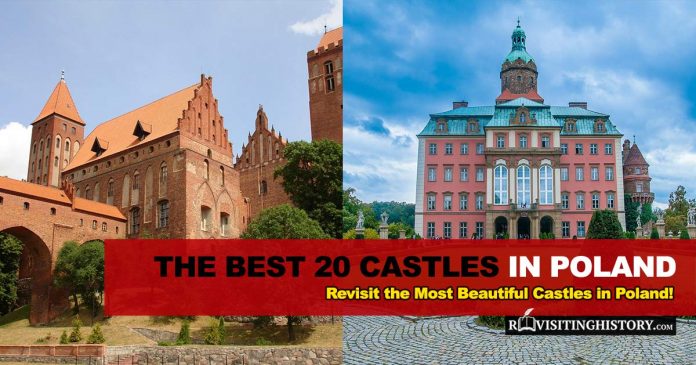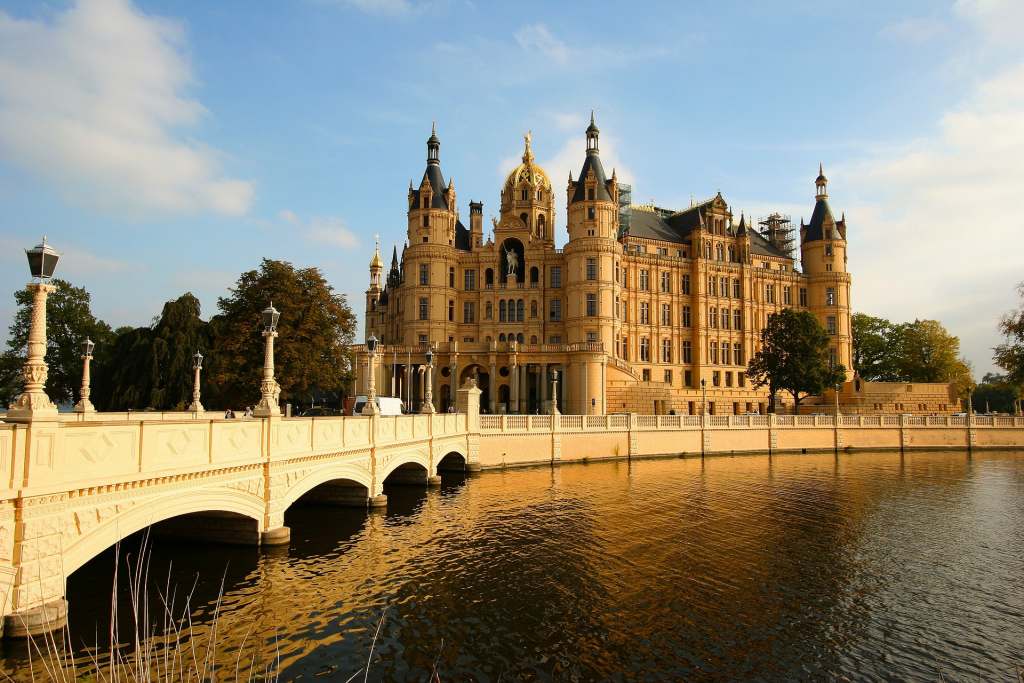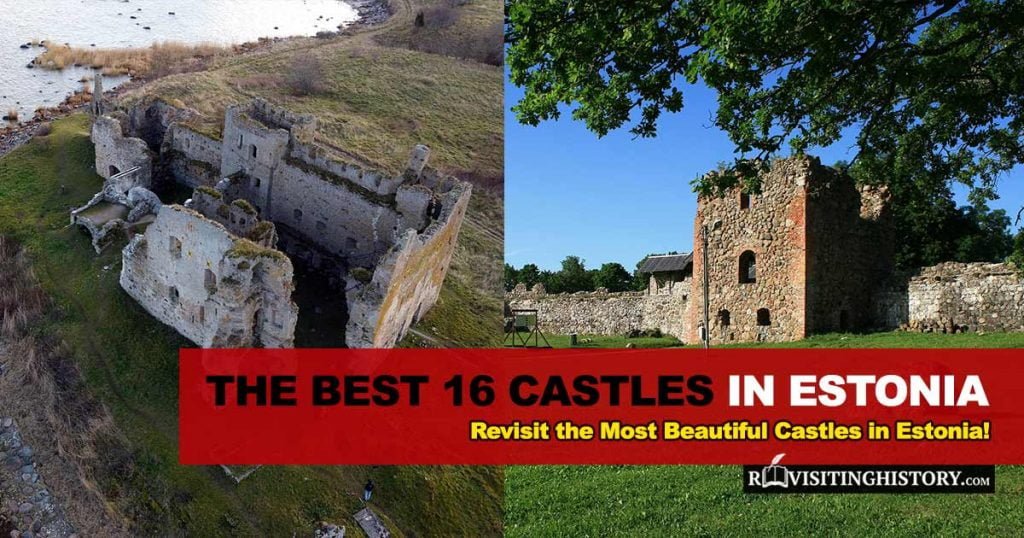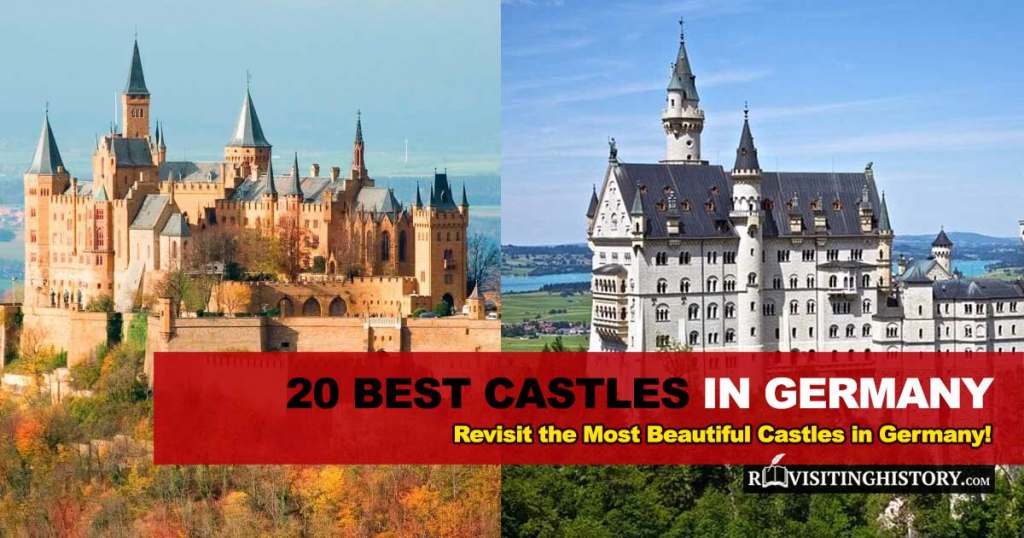Though Poland may not come as the first choice for many travelers, this holiday destination has a lot to offer. This country has lived through a large number of historical events and changes over the centuries. Some of Europe’s most spectacular castles are found in the nation. They narrate the country’s history to this day.
Poland has a multitude of castles, from the well-known Teutonic Order brick castles to medieval fortresses. Read on to find out more about these picturesque monuments to help you prepare your dream travel itinerary.
Table of Contents
10 Most Popular Castles to Visit in Poland
The order of the list is based on Google search volume of each castle = popularity.
1. Malbork Castle
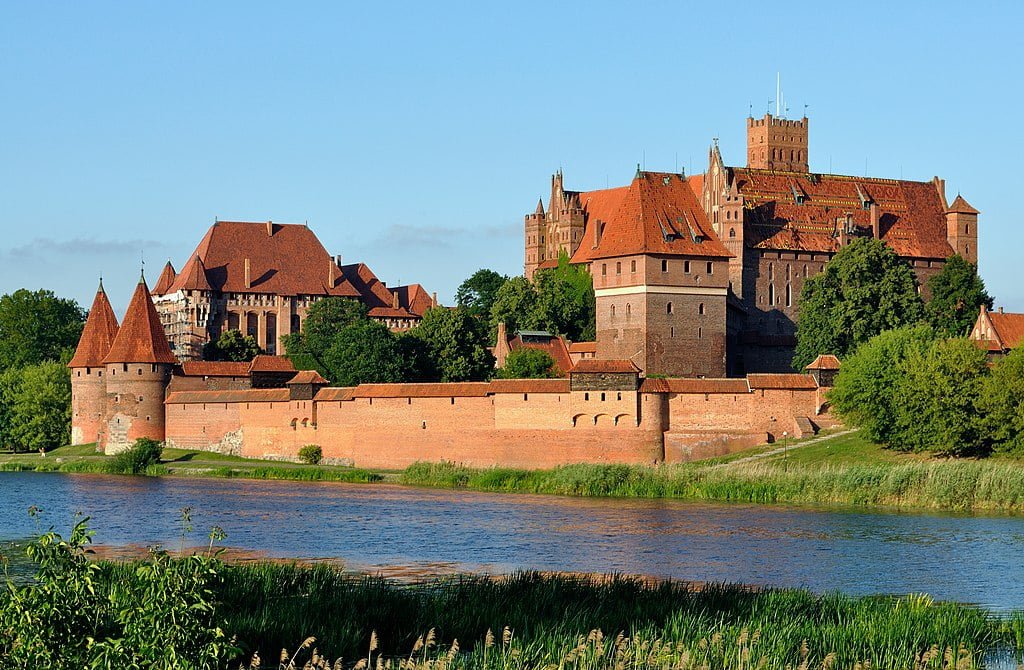
Poland’s Malbork Castle, located in Northern Poland, is one of the country’s most important and well-known castles. Malbork, like many other medieval castles, was situated in a strategic and advantageous location.
This castle was erected by the Teutonic Knights in the 13th century on the banks of the River Nougat. The castle was a royal hotspot in the Polish-Lithuanian Commonwealth during the 15th and 18th centuries.
Malbork Castle is one of the world’s biggest brick castles. A classically medieval fortification, Malbork Castle’s design is a famous example of Middle Age architecture.
Prior to World War II, Malbork Castle was rebuilt, but it was later destroyed during the conflict. However, its ultimate repair in 2016 helped the castle redeem its beauty. These days, the castle has been remodeled into a museum that hosts a plethora of exhibitions.
- Location: Malbork, Poland
- Time built: 13th century
- Architectural style:
- Touring: Allowed. Visit the official website for more information.
2. Książ Castle
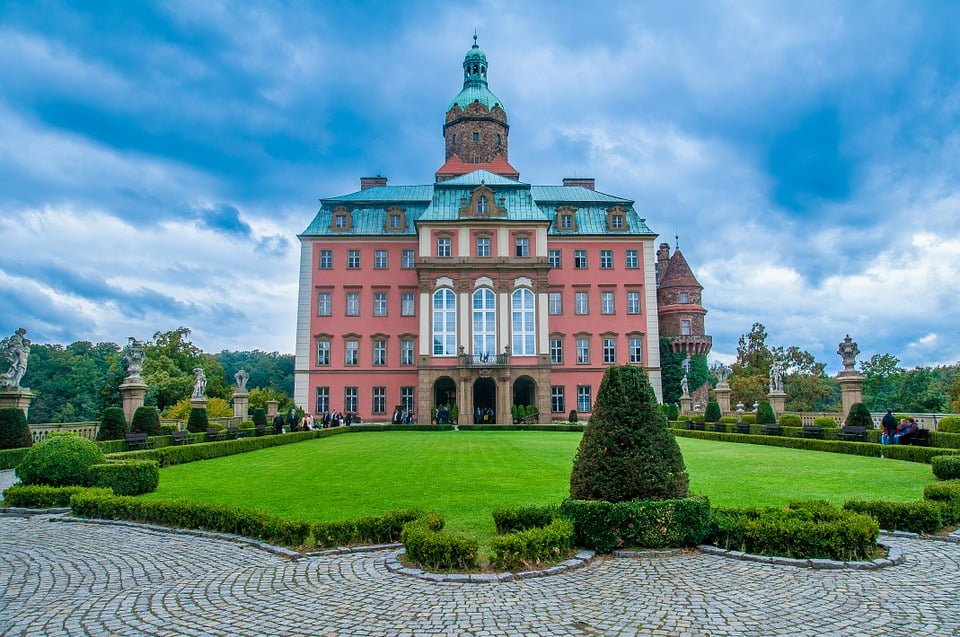
Ksiaz Castle is a majestic castle site situated in the Silesia region of northern Walbrzych. It boasts picturesque scenery with a view over the Pelcznica River.
Bohemian forces demolished the original site in 1263, erecting a new fortification in its place by the end of the 13th century. Hungarian military forces destroyed the new castle in 1482. Ownership of the land was bestowed upon the von Hohberg family in the early 16th century.
Renaissance-style reconstruction work was commissioned in the mid-16th century, with additional renovation work being completed as long as the family retained possession of the castle estate, until 1944.
In the present day, the castle estate is a marvelous display of opulence with lavishly renovated interiors and well-kept grounds. The castle is open to the public for guided tours. The estate also boasts an art museum, restaurants, and a hotel.
- Location: Silesia, Walbrzych, Poland
- Time built: 13th century origins
- Architectural style: Gothic, Renaissance, Baroque, Rococo
- Touring: Allowed. Visit the official website for more information.
3. Copper-Roof Palace
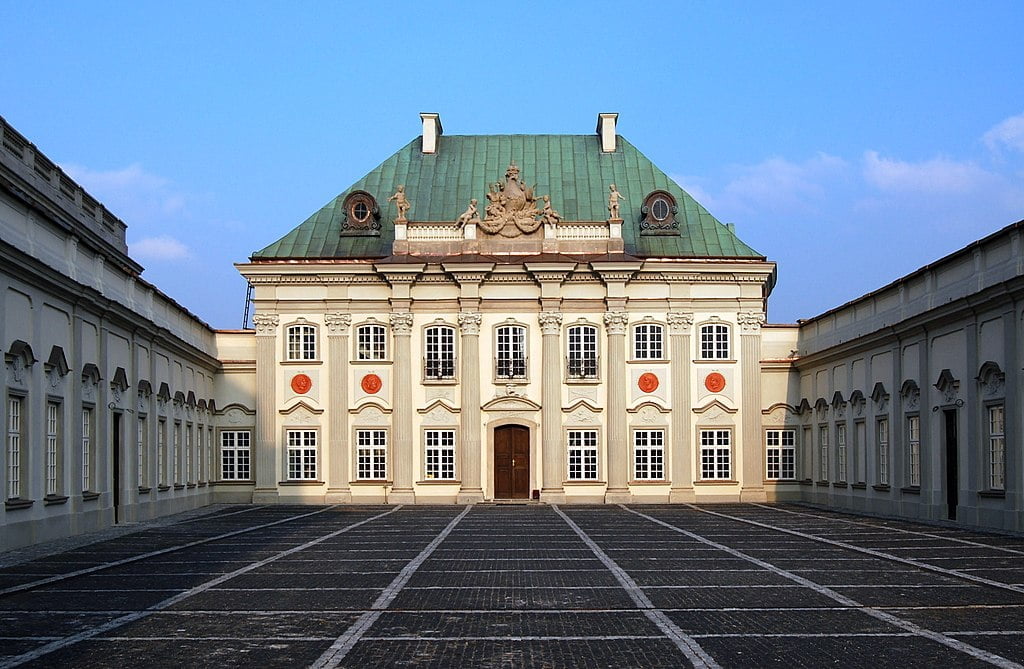
The stately Copper-Roof Palace is situated in the capital city of Warsaw. The grand palace was constructed in the early 18th century with a copper roof, uncommon for buildings of that era.
Reconstruction work was undertaken at the palace estate from 1720 and throughout the latter part of the 18th century. Projects included rebuilding work and the addition of another northern wing. The interior was also decorated with Rococo paintings.
When the Second World War was nearing its end, the Germans purposely set the palace on fire. Thorough restoration of the damaged site was undertaken in 1948-1949, returning the site to its former 18th-century opulence.
In the present day, the palace site is open to the public. The palace is attached to the Royal Castle of Warsaw and houses a museum, an historically informative library, and a fixed exhibition of oriental rugs.
- Location: Warsaw, Poland
- Time built: 18th century
- Architectural style: Baroque, Rococo
- Touring: Allowed. Visit the official website for more information.
4. Olsztyn Castle
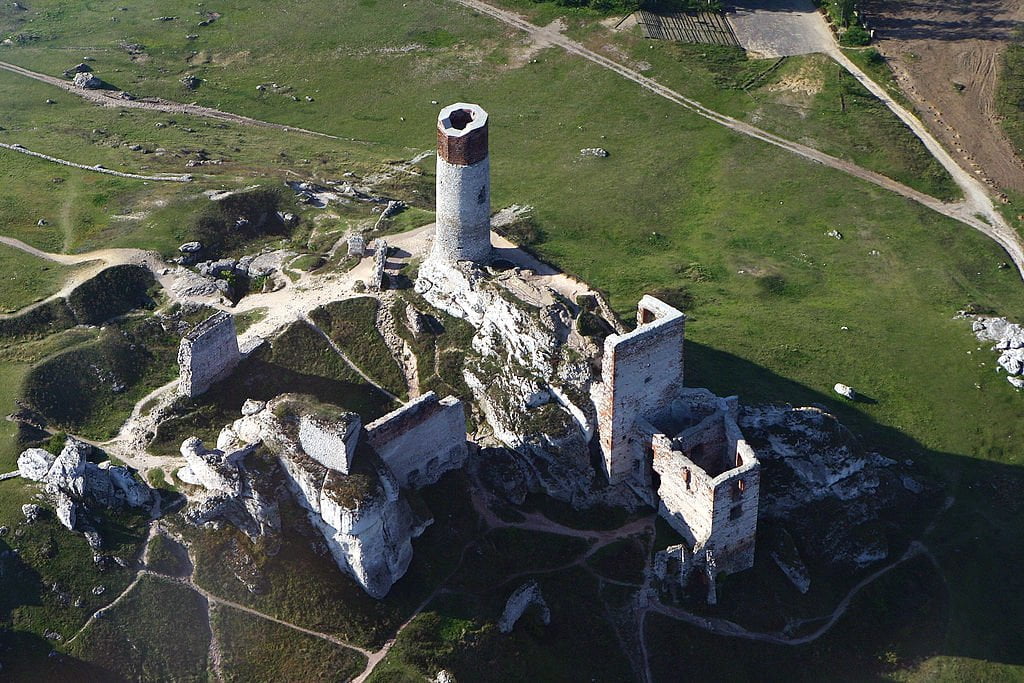
Olsztyn Castle is the town’s oldest structure. It was originally erected in the 14th century with two separate wings. According to archeological study, the stronghold was constructed from the ground up on a bare stretch of land where no evidence of any previous habitation has ever been discovered. St Anna’s Chapel, erected in the first half of the 16th century and dedicated by Bishop Martin Kromer in 1580, is located inside the castle walls as part of the southwest wing.
Olsztyn’s museum is recognized for its unusual types of sightseeing. Visitors can gaze inside chambers that are normally closed to the public on specific days or evenings and put on medieval armor or costumes. Visitors under the age of 18 are welcome to participate in special seminars.
- Location: Olsztyn, Poland
- Time built: 14th century
- Architectural style:
- Touring: Allowed. Visit the official website for more information.
5. The Royal Castle in Warsaw
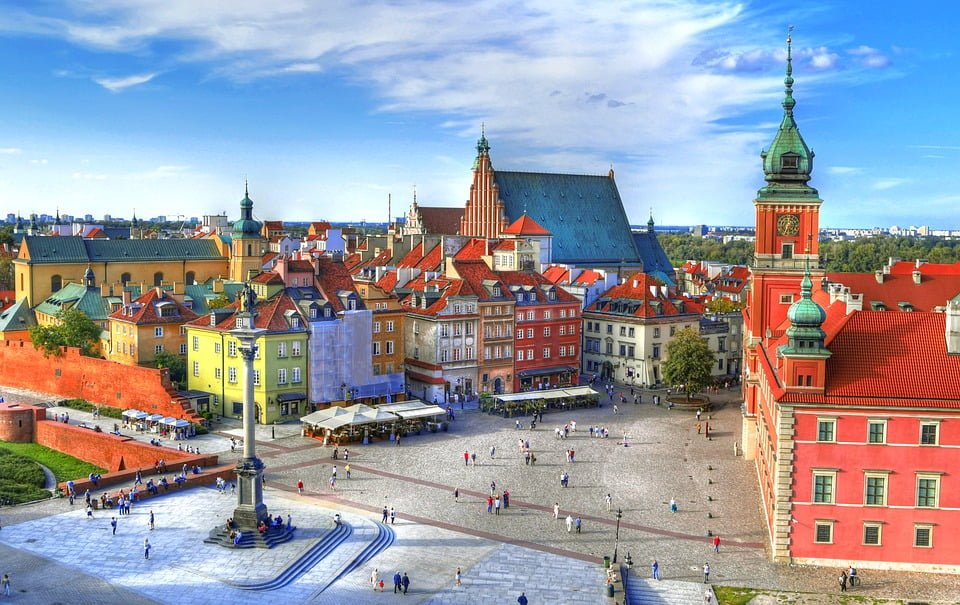
One of Poland’s best-known castles is the Royal Castle in Warsaw, at the heart of Poland’s capital city and its rich cultural heritage. Originally erected in the 1400s, the Renaissance architect Giovanni Battista di Quadro was involved in the castle’s 16th-century additions. During the Late Baroque era, the castle underwent further expansion while it served as a palace for generations of Polish kings, until the country was partitioned in the late 18th century.
A direct German bombardment at the start of WWII and Axis orders for demolition caused significant damage to the castle. Only certain castle elements that had been taken to Germany and Krakow, along with interior pieces saved by Polish art historians (despite threats of imprisonment or death) remained of the original castle. The building was rebuilt immediately after World War II’s end as a symbol and memorial of Polish history.
- Location: Warsaw, Poland
- Time built: 14th century
- Architectural style:
- Touring: Allowed. Visit the official website for more information.
Revisit More Historic Places Below or Read Further
6. Tykocin Castle
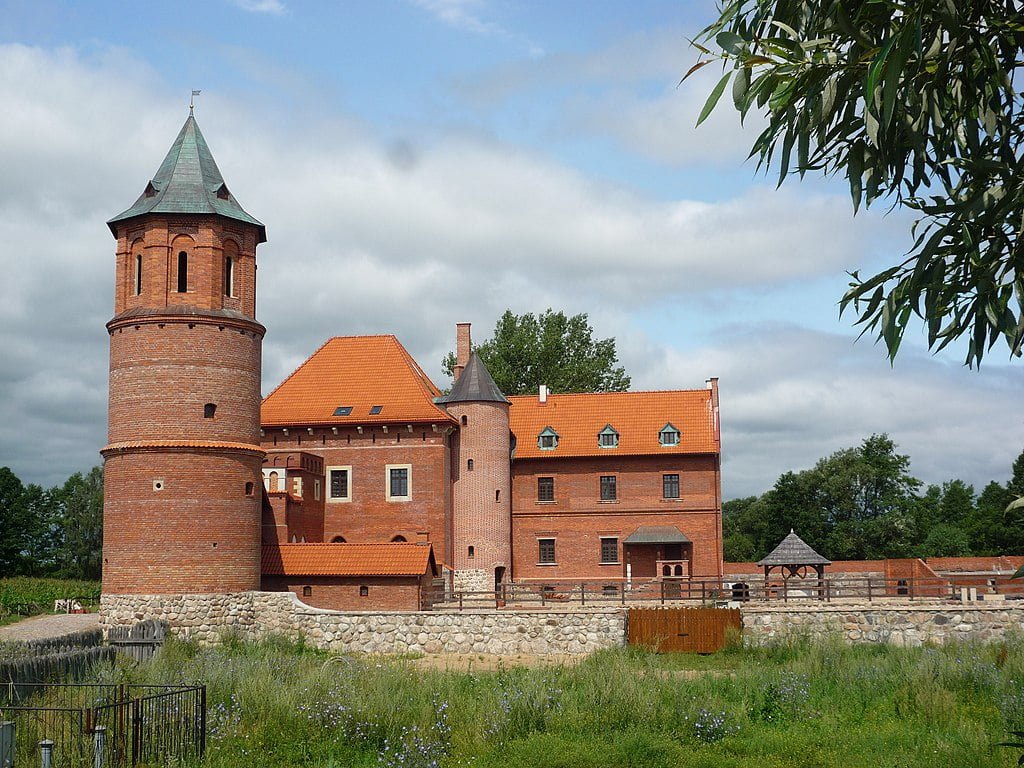
Lithunian noble Jan Gasztold built a massive brick castle over the remains of a fortress at Tykocin in 1433. In the next century, the castle passed to and was expanded by King Sigismund II Augustus. It served as a royal residence for quite some time after.
The Polish Republic built its largest arsenal here at the end of the 16th century, expansion continued for the next 50 years. From the Swedish Deluge through the War of the Polish Succession to the January Uprising, the castle wasn’t spared from warfare. There have been four different Battles of Tykocin, with two resulting in the castle’s destruction.
Eventually, the building deteriorated and fell into obscurity. Today, Tykocin Castle’s cellars, vast Glass Hall, and prison tower are once again open to the public after a lengthy scientific investigation and reconstruction project started at the turn of the 20th to 21st centuries.
- Location: Tykocin, Poland
- Time built: 1433
- Architectural style:
- Touring: Allowed. Visit the official website for more information.
7. Bolków Castle
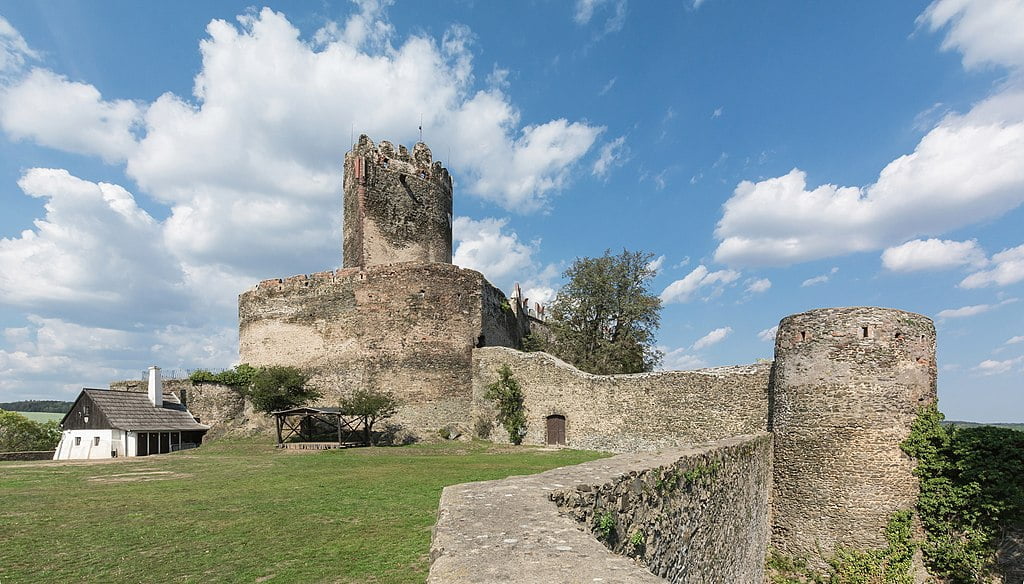
Bolkow Castle was initially erected in the 13th century, as a circular structure, but was later given a wedge-like form in the southwesterly direction. The castle was under the rule of the Piast Dynasty for more than a century, who used it as an official repository for state funds.
The following centuries saw several rounds of besieging and rebuilding before the castle was used as an infamous starving dungeon. For the most part, convicts lived less than a week when left on their own. A few of them lived longer off water licked off the walls, but this simply served to extend their torment.
Even though the castle was abandoned for over two centuries, it is a popular tourist destination today. Visitors are always welcome to the castle’s museum and the surrounding countryside; literature, music, and cinema have also uplifted the aura of Bolkow Castle.
- Location: Bolkow, Poland
- Time built: 1277
- Architectural style:
- Touring: Allowed. Visit the official website for more information
8. Gniew Castle
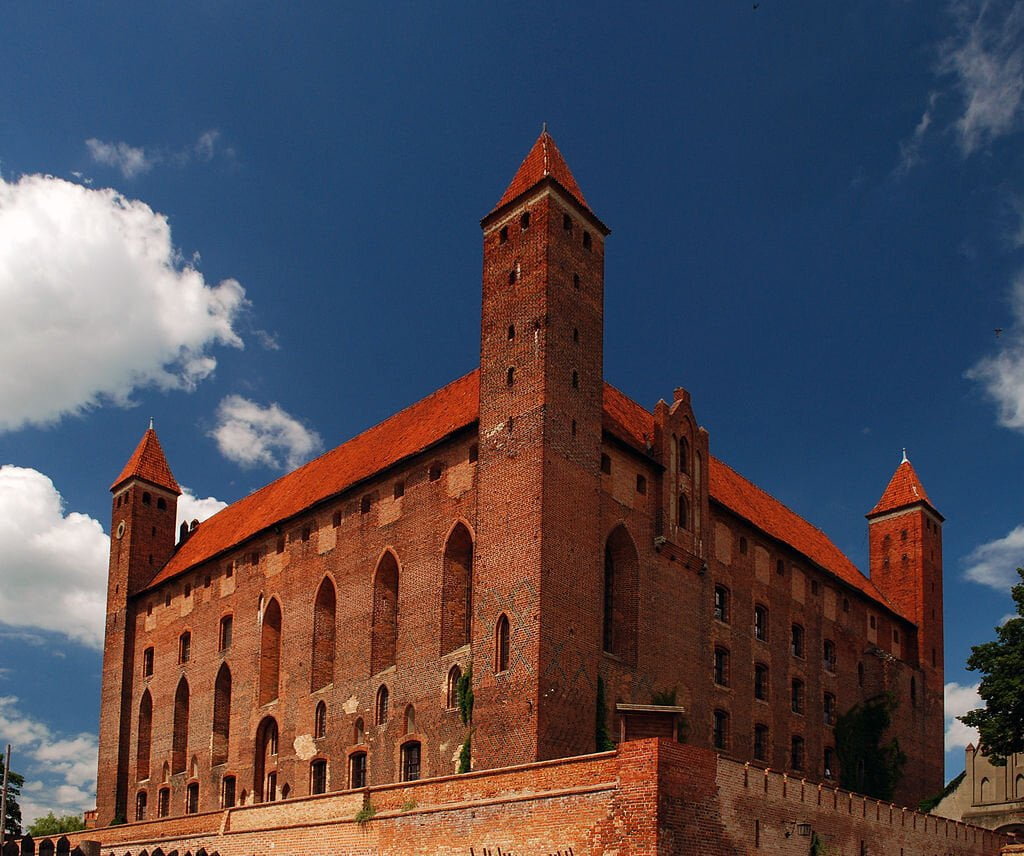
Gniew Castle is a dominating presence in the town of Gniew, situated on River Vistula’s left shore. Constructed by the Teutonic Order after 1290, the estate fell under Polish governorship in 1466.
Throughout its existence, the castle has been damaged, reconstructed, and expanded a number of times. The castle has also been used for various purposes through the ages, even adapted during the 19th century to serve as a silo and prison. A fire caused extensive damage to the castle in 1921, after which it was restored.
In the present day, Gniew Castle is open to the public as a top-rated tourist destination. The castle building is occupied by a division of the Gdansk Archeological Museum. The extensive castle estate includes a hotel, local culinary delights, conference and spa facilities, leisure and cultural integration activities, and hiking and cycling trails.
- Location: Gniew, Poland
- Time built: 13th century
- Architectural style: Medieval, Gothic
- Touring: Allowed. Visit the official website for more information.
9. Kliczków Castle
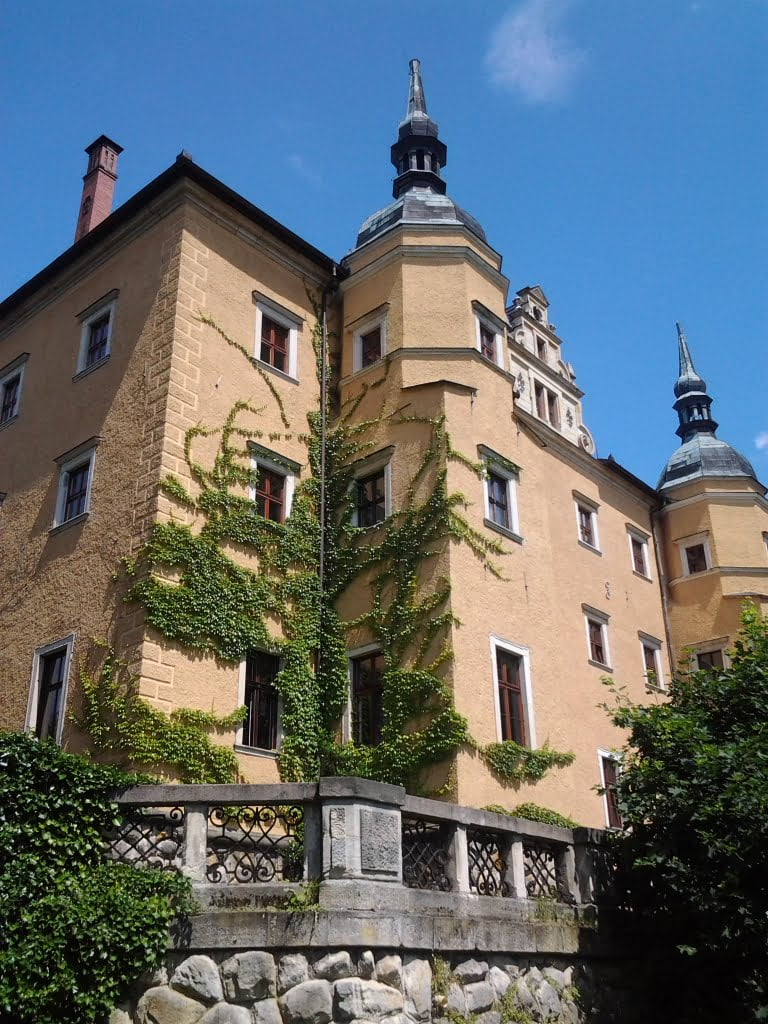
Fantastically restored and delightful, Kliczkow Castle is situated on the bank of the Kwisa river, in the town of Kliczkow. The Saxon Rechenberg family owned the grounds from 1391 until the end of the 17th century, although a medieval fortress had been built on the grounds by 1297. The present principal building began construction in 1585 in the Renaissance style.
A grand Empire-style ballroom was added to the estate in 1810 by then-owner, Count John Christian. A massive expansion project began in 1881, adding a mixture of architectural styles, including English Gothic, Italian Renaissance, and French Baroque.
Today, the well-maintained castle estate is open to the public. The compound boasts a modern hotel with various amenities for guests. There is also a conference and leisure center for visitors. Guided tours of the castle and its grounds are available.
- Location: Kliczkow, Poland
- Time built: 13th century, 16th century, 19th century
- Architectural style: Medieval, Gothic, Renaissance, Baroque
- Touring: Allowed. Visit the official website for more information.
10. Krzyżtopór Castle
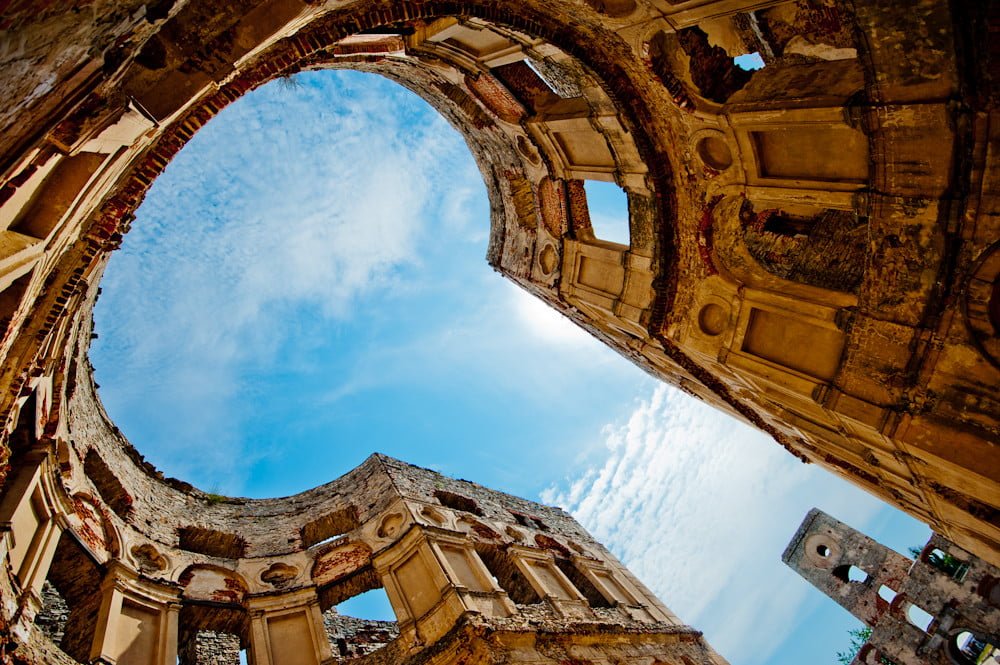
Krzyztopor Castle is a site of ruins, with around ninety percent of its walls restored. The castle bastions and moats also remain to be seen in the present day. The ruins are situated in Opatow County, in Ujazd town. Extensive research has not yielded much concrete information about the site.
The first written account of the castle was in 1627, while construction was still underway. It is believed that the site was completed in 1644. Over the centuries, the castle passed between various owners and was damaged, looted, and repaired numerous times. The castle was abandoned after 1787.
Today, the castle ruins are open to the public throughout the year. There are fantastic informative day tours available for visitors. Tourists can also book a sightseeing trip during the evening when the castle ruins are beautifully illuminated with modern lighting under the magical sky.
- Location: Krzyztopor, Poland
- Time built: 17th century
- Architectural style: Baroque
- Touring: Allowed. Visit the official website for more information.
Planning to Visit Nearby Countries? Check Out These Best Castles Lists:
10 Less Popular Castles Worth Visiting While In Poland
If you are a castle enthusiast, you must take out the time to visit these equally spectacular castles in Poland as well:
11. Kwidzyn Castle
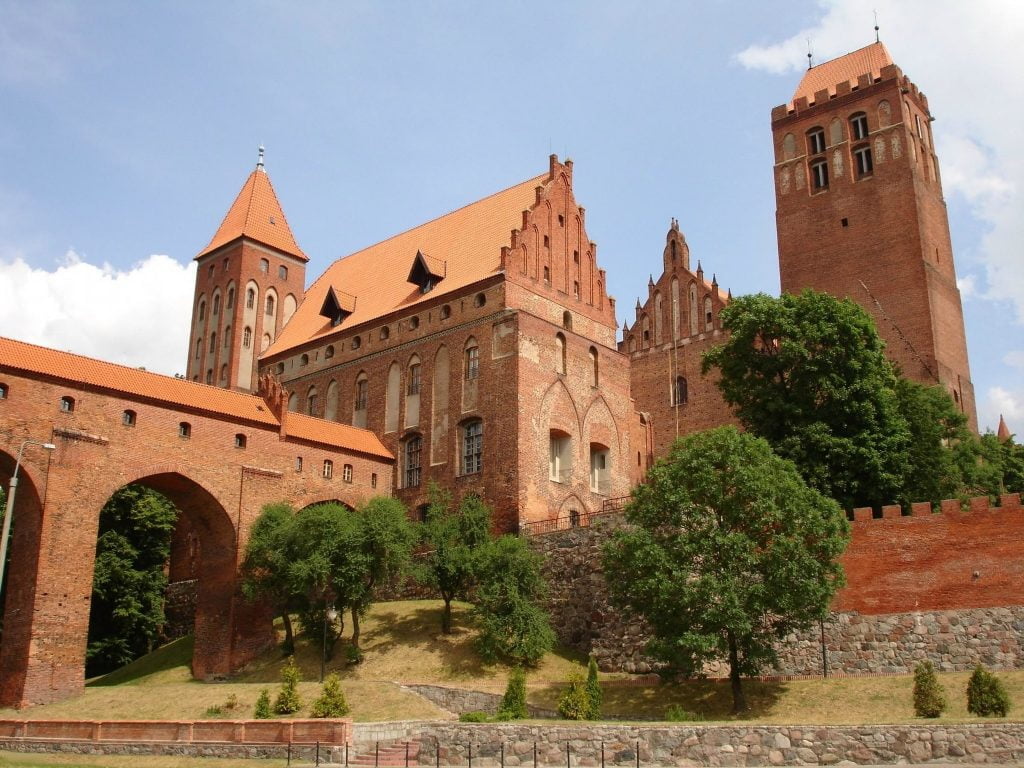
Kwidzyn Castle is a sizable brick structure situated in Kwidzyn, Poland. The Gothic-style castle, built in the 14th century, is in partial ruins. Nonetheless, it remains a good representation of the Teutonic Knights’ Order architecture.
Nowadays, structures to explore include a massive cathedral and courtyard which are connected to the castle. Various tombs are housed at the castle. Among the better-preserved areas of the castle are a well with a porch, and a dansker (toilet facility), and The Branch of the Castle Museum of Malbork.
- Location: Kwidzyn, Poland
- Time built: 14th century
- Architectural style: Brick Gothic
- Touring: Allowed. Visit the official website for more information.
12. Łańcut Castle
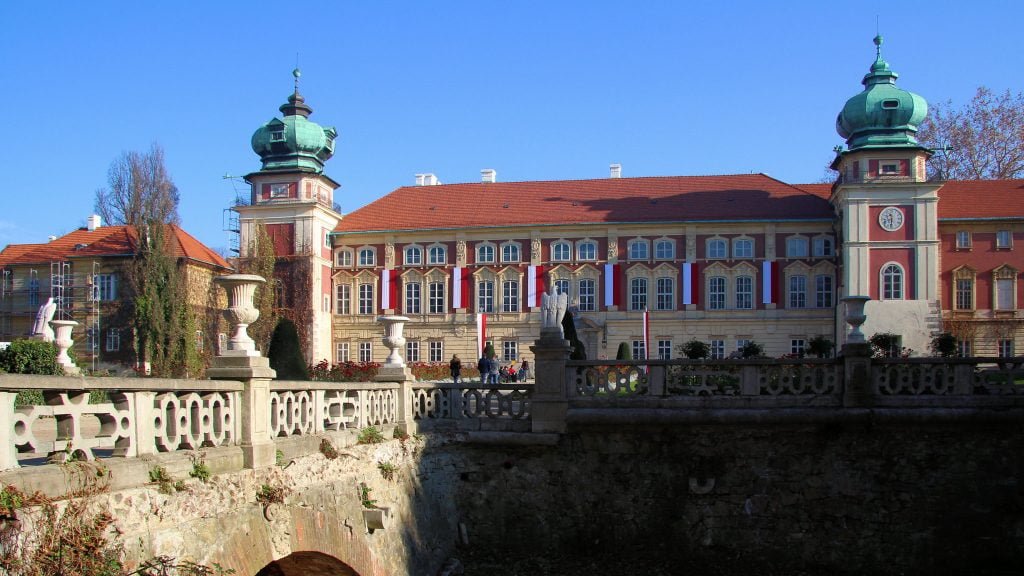
Łańcut Castle, also known as the “Baroque Palazzo in Fortezza”, is a grand castle complex situated in the town of Łańcut in Poland.
A wooden castle was erected on the hill in the 14th century. It was rebuilt as the current castle in the 17th century by new owners, the Lubomirski family. The castle was further modernized as a residential palace.
An early English style was used to landscape the castle estate’s delightful park and gardens. The Orchid House features a vast array of orchids for tourists to marvel at.
- Location: Lancut, Poland
- Time built: 14th century, 17th century
- Architectural style: Neo-Gothic, Baroque, Rococo, Classicist, Pre-romantic
- Touring: Allowed. Visit the official website for more information.
13. Pieskowa Skała
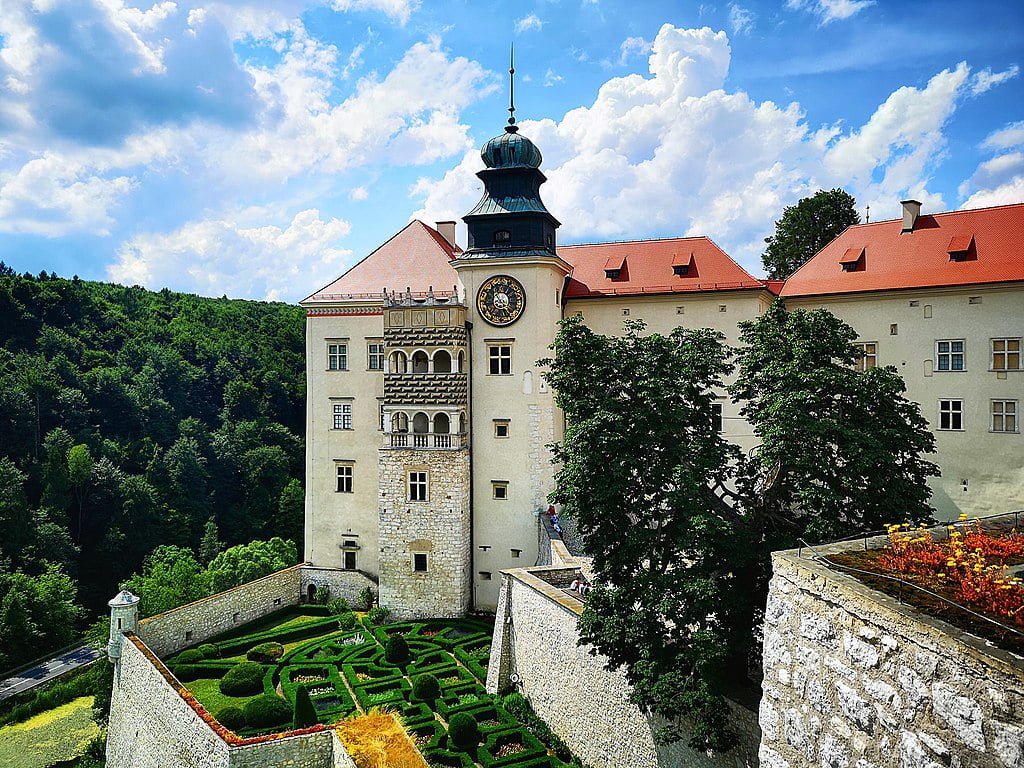
Pieskowa Skala Castle was erected in the 14th century in the Polish Renaissance architectural style. It is situated on the limestone rock known as Pieskowa Skala in the Pradnik river valley in Poland.
The castle was rebuilt in the Mannerist style in the 16th century, with a trapezoid-shaped courtyard surrounded by arcades at the upper levels. In the 17th century, bastion fortifications, a chapel, and a Baroque gate were added to the castle.
The castle, now owned by the Polish state, has been impeccably restored over the last century.
- Location: Pieskowa Skala, Poland
- Time built: 14th century, 16th century
- Architectural style: Renaissance
- Touring: Allowed. Visit the official website for more information.
14. Reszel Castle
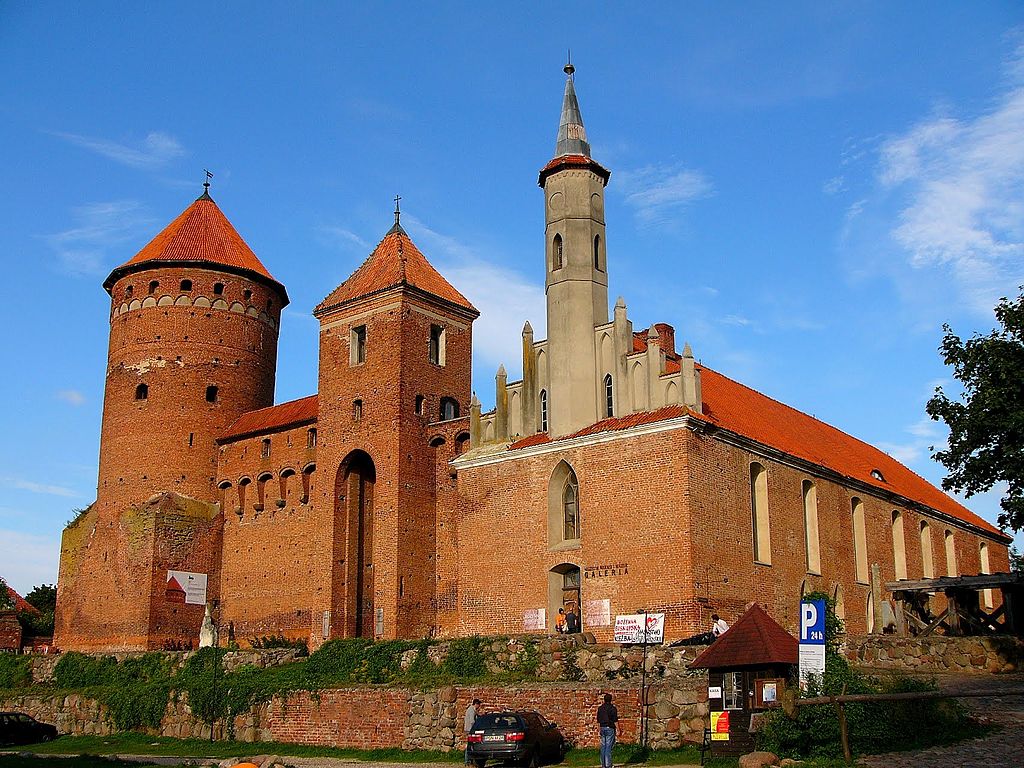
Reszel Castle is a historical Teutonic Order style fortress located on the shores of the Sajna River in the southeast part of Reszel city, Poland. The castle was first built in the 14th century.
The castle was burnt to the ground in the early 19th century and reconstructed in 1822, with the addition of a Lutheran church building, before being modified for use as a prison. After World War II, the castle was completely reconstructed again.
Today, the castle site includes a hotel, restaurant, and a branch of the Warmian – Masurian Voivodeship in Olsztyn.
- Location: Reszel, Poland
- Time built: 14th century
- Architectural style: Gothic
- Touring: Allowed. Visit the official website for more information.
15. Royal Castle Bobolice
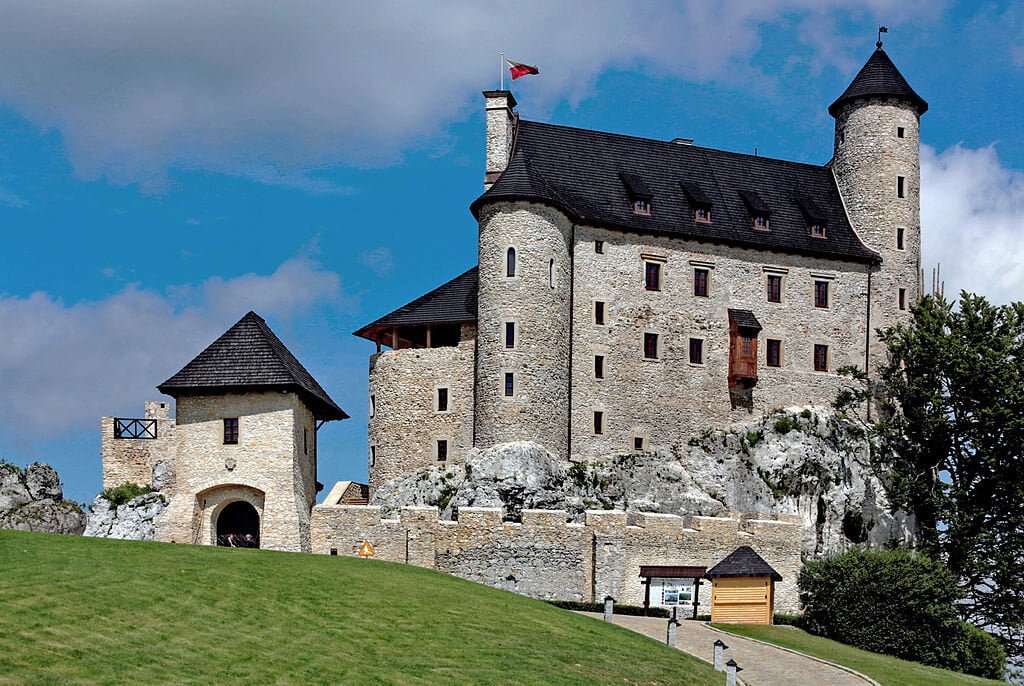
Bobolice Castle is a fortified castle compound originating in the 14th century, situated in the town of Bobolice in a mountainous highland region named the Polish Jura.
Bobolice Castle was almost destroyed in 1587 during a revolt. The castle was reconstructed but tragedy struck again when it was completely obliterated by Swedish troops.
In the 19th century, valuables were discovered in the cellar strongholds of the dilapidated castle. In 1999, the next owner started to rebuild the castle. Today, the castle is open to the public.
- Location: Bobolice, Poland
- Time built: 14th century, 16th century
- Architectural style: Medieval
- Touring: Allowed. Visit the official website for more information.
Revisit More Historic Places Below or Read Further
16. Ujazdów Castle
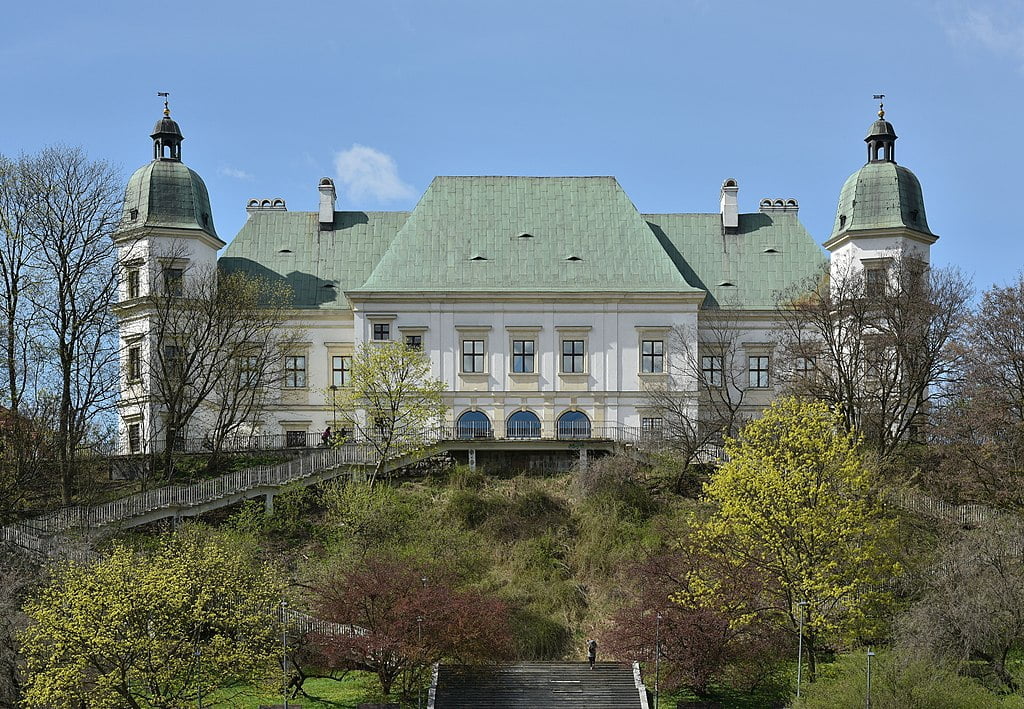
Ujazdów Castle is a fairy-tale-esque castle situated between the Royal Baths Park and the Ujazdów Park in Warsaw, Poland. The castle was first built in the 13th century, but the current Baroque and Neoclassical architectural style of the castle was acquired through numerous rebuilds & alterations made across centuries.
Today, The Warsaw Center for Contemporary Art occupies the magnificent castle. Various interesting exhibitions, informative workshops, and entertaining concerts are showcased by the Center at the castle throughout the year.
- Location: Warsaw, Poland
- Time built: 13th century
- Architectural style: Baroque, Neoclassical
- Touring: Allowed. Visit the official website for more information.
17. Uniejów Castle
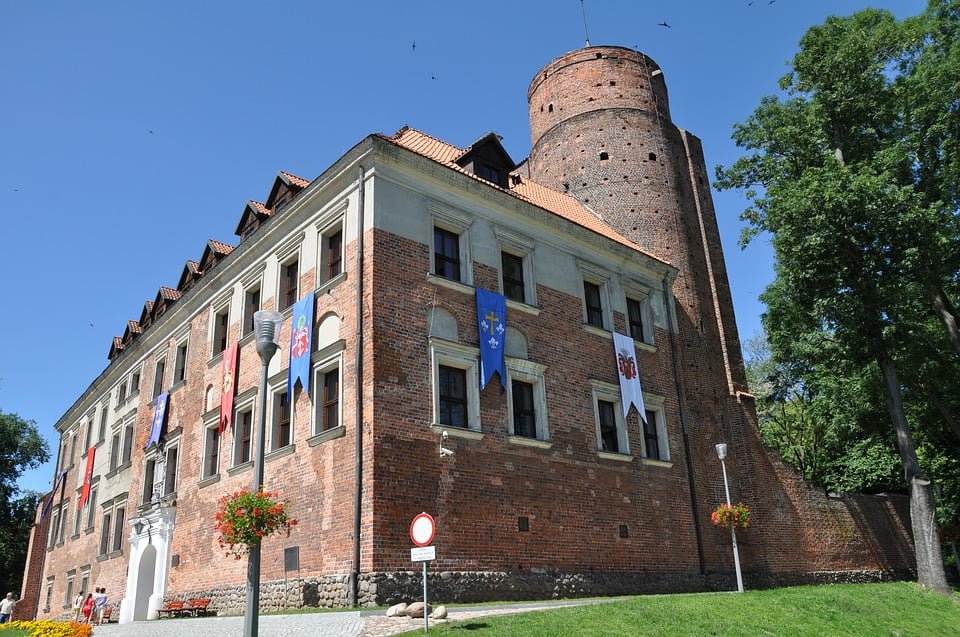
Uniejów Castle is a scenic castle situated in the town of Uniejów in the Lodz region of Poland. The castle was constructed in the 14th century to replace a wooden fortress. After a fire mostly destroyed the newly-built Gothic castle, it was reconstructed and modernized in the early 16th century. The castle had mainly served as a fortress of military significance but in the 17th century, it was used as a residence. Uniejow Castle was remodeled in the Classical architectural style by 1848. Today, the castle has an accumulation of architectural styles.
- Location: Uniejow, Lodz, Poland
- Time built: 14th century, 16th century, 19th century
- Architectural style: Classical
- Touring: Allowed. Visit the official website for more information.
18. Zamek Ogrodzieniec
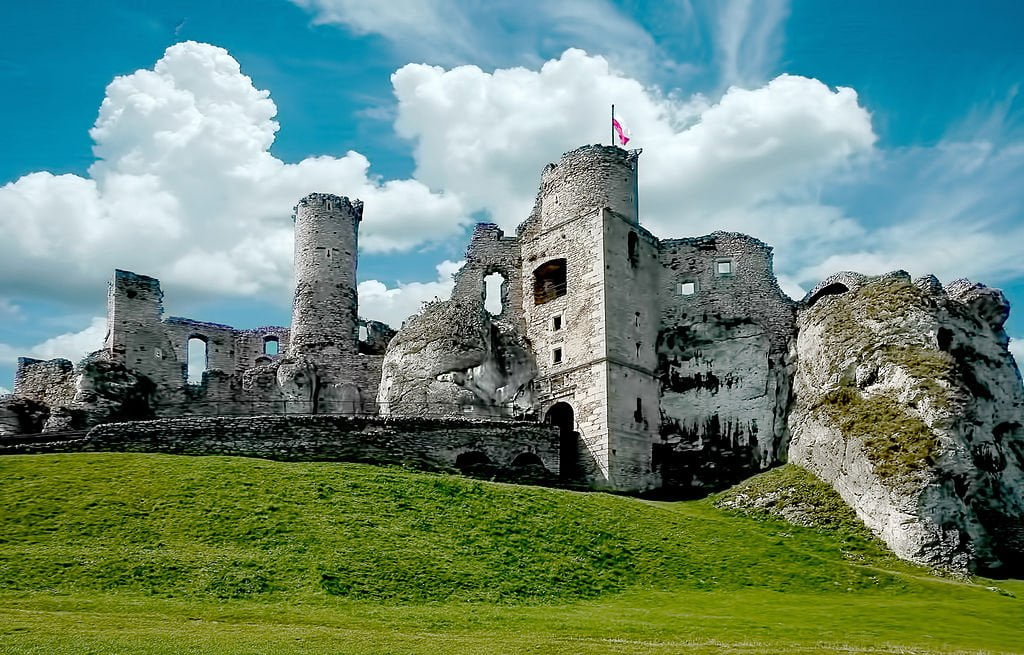
The Zamek Ogrodzieniec Castle ruins possess a rich history as a once-dominant fortification atop the Castle Mountain. They are situated in Polish Jura, a southcentral region in Poland.
The castle was built over a fortress in the 14th century. It was damaged and rebuilt several times until 1702, when it was again largely destroyed by fire and never rebuilt.
The castle ruins are open to the public, situated along a well-known hiking trail in Poland, the Trail of the Eagles’ Nest, which links several popular castle sites together.
- Location: Polish Jura, Poland
- Time built: 14th century
- Architectural style: Medieval
- Touring: Allowed. Visit the official website for more information.
19. Nowy Wiśnicz Castle
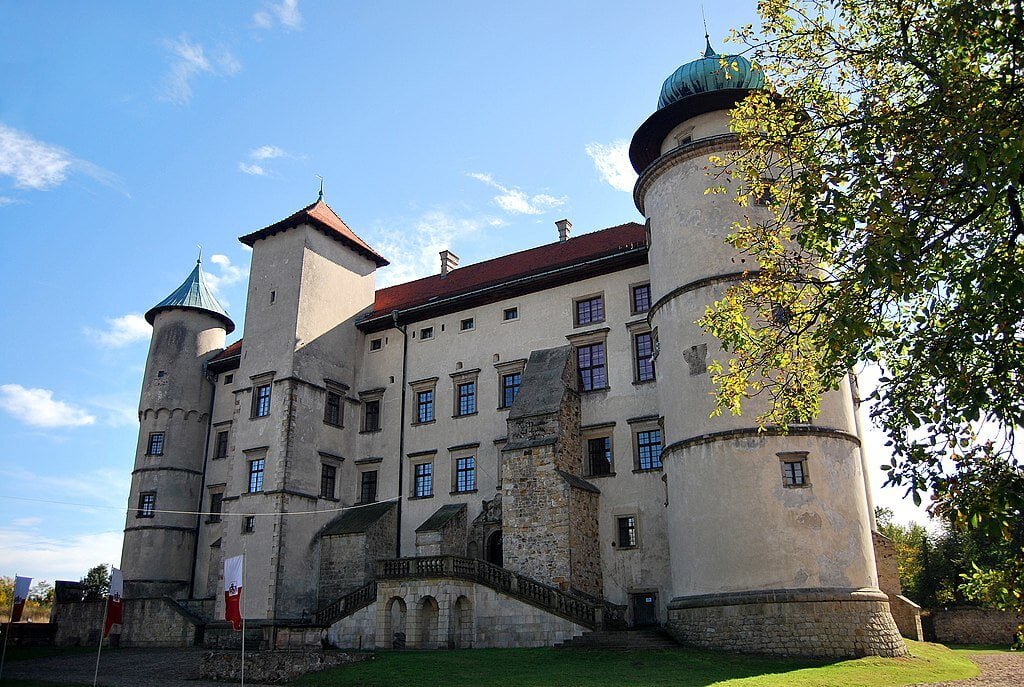
Nowy Wiś́nicz Castle is a charming castle situated in the village of Stary Wiś́nic, on a wooded hill overlooking the River Leksandrówka in Poland.
The castle was erected in the latter part of the 14th century, designed in the Baroque and Renaissance architectural styles. The castle has a quadrilateral shape with an inner courtyard. From the 17th century, the castle has been surrounded by citadel fortifications and a main gate.
The castle boasts a wealth of history over its 4000 year existence and is open to the public for touring.
- Location: Stary Wiśnic, Poland
- Time built: 14th century
- Architectural style: Baroque, Renaissance
- Touring: Allowed. Visit the official website for more information.
20. Dobczyce Castle
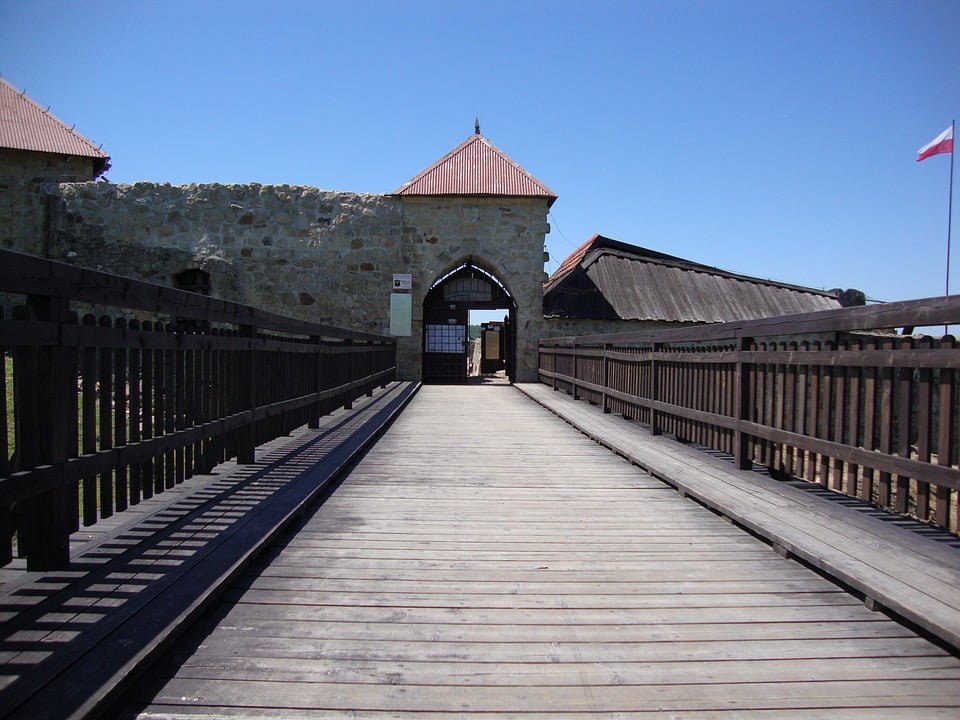
Dobczyce Castle is a reconstructed castle situated on a rocky hill above Lake Dobczyce, near the town of Dobczyce, Southern Poland.
Written about in as early as 1362, the castle was a fortified structure with very thick walls. From 1398, the castle served as a Royal residence. The castle was transformed from a Gothic-style fortress into a residential Renaissance-style castle by the Lubomirski family, the castle’s owner since 1585.The site was comprehensively excavated in the 1960s and is open to the public to experience and enjoy now.
- Location: Dobczyce, Poland
- Time built: 14th century, 16th century
- Architectural style: Gothic, Renaissance
- Touring: Allowed. Visit the official website for more information.
Planning to Explore Europe? Check Out These Best Castles Lists:
Conclusion
With its charming and historical cities brimming with vibrant culture, Poland is a rapidly growing destination for visitors from all over the world.
Poland has been building castles since the 10th century, which means that each and every castle that stands in the country today has a unique set of stories to tell about kings and queens, military battles and conflict, as well as their role in modern-day history–including the Second World War, which had a significant impact on the country’s culture and traditions.

